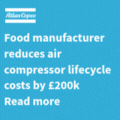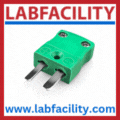
Posted to News on 12th Jul 2010, 09:50
Motorised screw jack systems raise and lower building roof
Power Jacks is supplying motorised screw jack systems for raising and lowering the roof on innovative composting plants.
Today composting plants are performing an integral part of each country's infrastructure to reduce waste and maximise recycling. In order to increase the efficiency of In-Vessel Composting (IVC) plant, Power Jacks was recently asked to provide a linear motion system for The Composting Company's innovative composting process.
An IVC plant processes biodegradable household and commercial material to produce a compost for use in agriculture, landscaping, top dressing and by the public. It diverts waste from landfill and helps reduce the release of methane, which is a greenhouse gas. The IVC is fully compliant with the UK's Animal By-Products Regulations (ABPR) for the processing of food inclusive material.
The Composting Company's IVC vessels are said to be unique in that they have a lifting roof with a patent pending on the system. The reason for this is to allow access for the loading shovels when opened and, when closed, it provides a small void space above the material to allow for better process control. The roof is positioned by a linear motion system designed and manufactured by Power Jacks.
System components
Providing the linear motion for each roof are two individually motorised screw jack systems, synchronised electronically to operate in unison. The jacking system raises and lowers the roof via a simple pushbutton operation and can lift the roof over its complete 2m stroke in less than one minute. The type of screw jack used in the systems is Power Jacks' classic E-Series single face screw jack, which is a popular choice for customers around the world designing jacking systems due to its performance, robustness and reliability. For this application 100kN capacity jacks were used to provide adequate load rating and structural rigidity. Originally when development started in 2007 the application used UE1811 upright rotating screw jacks; however, this has now changed to ME1810 upright translating screw jacks as the IVC design developed. This has resulted in an improved roof structure and mechanism that also benefits from the integrated dual lubrication mechanism inside the E-Series translating screw jack.
The screw jacks are aligned along the side wall of each vessel, one at each corner and one in the centre. The screw jacks are situated inside the wall and are connected to the roof. Each wall has a motor that drives the screw jacks on that wall with the two motors synchronised for each side of the vessel. When lowered, the screw jacks are protected inside the wall and they operate in a non-hazardous environment because they are outside the vessel where a corrosive atmosphere exists.
Composting process
In the IVC plant the composting process starts when material is delivered to site and tipped inside a reception building where the pre-processing work is carried out. The material is then shredded and mixed before being removed to the first of two barriers of composting vessels. Moisture is also checked to ensure that it has around 60 per cent, which is important for the composting bacterial activity.
The roof on a vessel in Barrier-1 is lifted to its full height by the screw jack system in less than one minute to allow access for a loading shovel to load in the shredded, mixed material. When loaded, temperature monitoring probes are placed into the material and the roof is lowered. The aeration system is activated and this circulates air through the material in the vessel to maintain oxygen levels. Composting is a natural biological process that requires aerobic conditions and moisture for the composting bacteria to work well. The Composting Company's aeration system monitors the level of oxygen in each individual vessel, as the oxygen demand will vary from vessel to vessel depending on the mix of material and the stage of the process. When oxygen reaches a lower limit the aeration system automatically draws in fresh air to replenish the oxygen and exhaust stale air to a biofilter. A proprietary SCADA system monitors both oxygen and temperature and allows for remote alteration of settings if required.
Temperature also has to be monitored to comply with the Animal By-Products Regulations (ABPR) for the processing of food waste, which requires a temperature of 60degC to be achieved for at least 48 hours in order to kill pathogens. In practice the material stays in the vessel for 7-11 days, as the controlled environment speeds up the composting process.
After 7-11 days the Barrier-1 vessel is unloaded, from the opposite end from which it was loaded, into Barrier-2, and the process is repeated in compliance with ABPR. After 7-11 days in Barrier-2 the material is sanitised and removed to a maturation pad where it is formed into windrows (long piles of compost) and monitored for temperature and oxygen for four weeks or more, depending on the final application.
When it has matured sufficiently for the application it is screened to a suitable size for the end product and sold to agricultural users, landscape gardeners, garden centres or the public.
Screw jack supply
Each building that houses the vessels requires two jacking systems (one per side), each with three screw jacks and one motor. To date Power Jacks has provided screw jack systems for 20 IVCs.
There are currently four IVC's at Cumberlow Compost Services and 16 at The West London Composting Company (WLC), and they have been in operation since March 2008. The vessels supplied to the WLC site by The Composting Company make it the largest IVC in Europe, with an annual capacity of 100,000 tonnes.
The Composting Company is currently expanding the number of vessels by four at the Cumberlow site, and there are also other sites requesting the system. As the supplier, Power Jacks are providing on-going support and product development.
Roger Hughes, Commercial Director of The Composting Company says: "Power Jacks have provided us with an excellent service throughout the construction of both sites and, subsequently, whilst dealing with teething problems. The jacks have proven reliable in use, work well and do everything we require of them."
Follow the link for more information about screw jacks.





